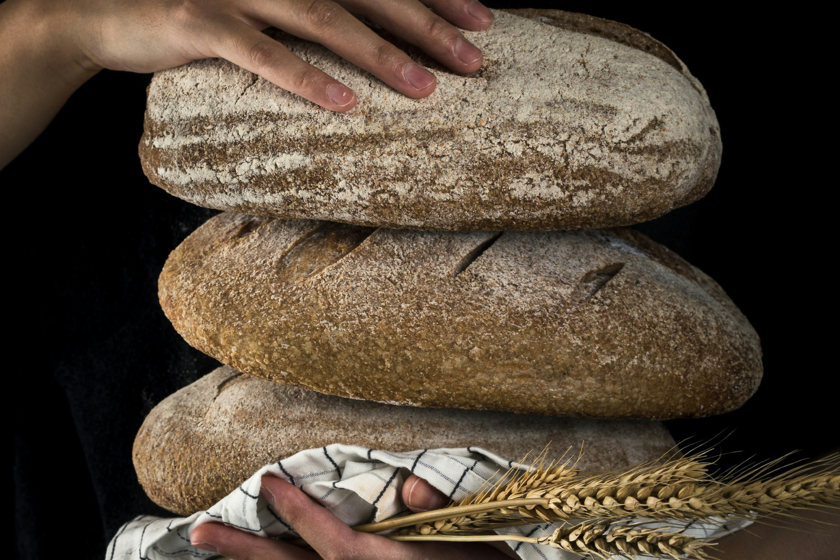A year ago, every time I ate something, my belly swelled like a balloon. I felt heavy, with gases, uncomfortable. I did not understand what happened to me, until I tested positive for bacterial overgrowth in the small intestine or its short version, Sibo. I started an antibiotic treatment and a very restrictive diet. I left gluten, dairy, nuts, fruits … almost everything. And when it seemed that I finally felt better, the strangest part of the process came: I had to reintroduce some foods, little by little, as if it were a vaccine; but I did, I would become intolerant.
Increasingly widespread. Increasingly widespread. In both medical consultations and conversations, surely the term Sibo (for its acronym in English, bacterial intestinal overgrowth) is no longer unknown. This condition describes an imbalance in the intestinal microbiota: bacteria that should be found in the colon end proliferating in the small intestine, an environment where they should normally be almost non -existent. This invasion causes varied and annoying symptoms, such as abdominal swelling, gases, pain, diarrhea or constipation, according to Mayo Clinic.
It is estimated that up to 15% of the Spanish population suffers from it, and is more frequent in women between 30 and 50 years, according to the Spanish Society of Primary Care Physicians (Semergen). Its diagnosis has increased in recent years thanks to greater awareness and evidence such as the breath test, a non -invasive technique that measures the amount of gases produced by bacteria after ingesting carbohydrates.
After diagnosis. It is followed by a low diet in Fodmaps, a protocol that eliminates the most fermentable foods to relieve symptoms. It is not a cure in itself, but it helps reduce gas production and abdominal discomfort while antibiotic treatment takes effect. The problem comes later.
We talk to Jesús Guardiola, dietitian-nutritionist, to understand what happens in that critical phase: food reintroduction. “A low diet in Fodmaps should not be maintained in time because, when restricting so much, it can affect nutritional diversity and microbiota. But also, if you stop consuming certain foods for a long time, you can lose tolerance to them,” he explains.
The intestine also forgets. Stop eating gluten does not cause celiacy. This is an autoimmune disease that only appears in genetically predisposed people. However, eliminating it prolonged can generate an unexpected reaction: that the body tole it worse when reintroducing it, Guardiola points out.
This can go through several mechanisms: enzymatic (the body stops producing enzymes such as lactase, necessary to digest lactose), immunological (less exposure can alter the immune response), or by changes in the microbiota (bacteria in charge of digesting that food disappear). From Monash University, in Australia, an institution that developed the diet has explained about these effects on prolonged restrictions can reduce functional tolerance and affect microbial diversity.
But not a real intolerance. No, of course. The point is that it has been shown that eliminating food groups can alter microbiota and digestive capacity. The body needs gradual exposure to adapt, so the reintroduction must be done carefully and individually, according to the academic institution.
“The key is to do it little by little, evaluating the symptoms, writing amounts and reactions. If you introduce many foods at the same time and something feels bad, you will not know what it was. And if you do it too fast, it is more likely that you can fall or that you suggest you thinking that it will sit badly,” Guardiola warns.
The diagnosis of Sibo. The boom has also been accompanied by some controversy. Each time it is diagnosed more frequently, but not always with clear criteria: in many cases it is by discard, when other pathologies have been eliminated, and sometimes without conclusive evidence. This complicates the precise identification of the disorder, and can lead to confuse with food intolerances, functional disorders or, simply, with bad habits.
From Semergen they have insisted that the treatment requires a comprehensive approach: not only medications, but also changes in the diet, lifestyle and analysis of the complete clinical history. To this is added an increasingly common problem: patients who adopt low fodmap diets on their own, without professional supervision, and who keep them for months or even years. Instead of improving, this can end up deteriorating even more intestinal health.
What I learned during the process. Today I eat gluten again. I am not celiac. But I went through months of fear of food, not knowing if what I ate was healing or getting sick. I understood that there are no good or bad foods, but contexts, quantities and, above all, processes.
Reintroduction is not just another part of treatment. It is a way to reconcile with food. And to understand that, sometimes, the problem was not bread, but how we stopped eating it. Sometimes healing means exposing yourself to what you thought you hurt you. In my case, yes: I had to inoculate gluten.
Image | Unspash
WorldOfSoftware | It looks like flavored water, enters as a soda and carries protein as a shake: this is the clear protein












